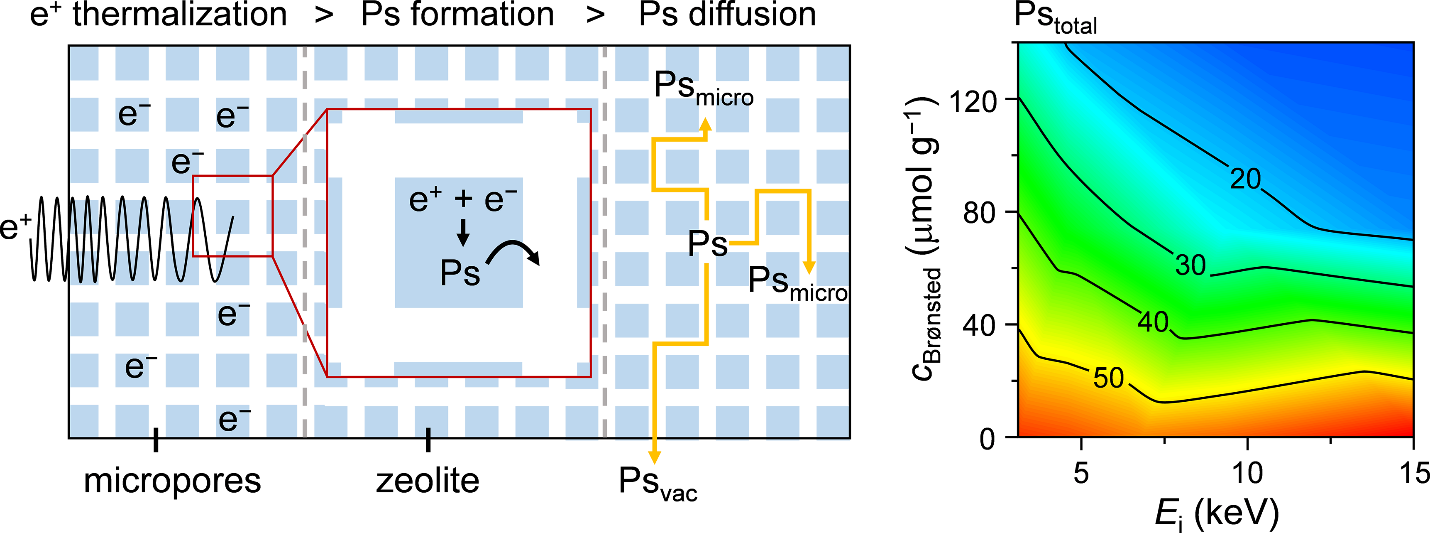Quantifying the impact of acidity on positronium formation and annihilation in zeolitic materials
Positron annihilation lifetime spectroscopy (PALS) demonstrates unique sensitivity towards elucidating the connectivity of pore networks in zeolitic materials, which is based on the diffusional behavior of metastable ortho-positronium (o-Ps) species formed in situ upon positron implantation.1 Chemical interactions between o-Ps and acid sites in a solid have been widely postulated to perturb the purely kinetic response.2 However, the specific impact of the nature and amount of acid sites on the lifetime and intensity of different o-Ps components, and the implications for porosity analysis, have not been quantified. By studying a series of ZSM-5 (MFI structure) samples with tailored crystal size and Si:Al ratio, we map the dependence of the amount (Pstotal) and fractional distribution (Psmicro, Psvac) of o-Ps measured on the concentration of Brønsted acid sites and the implantation depth of positions (Figure 1). By modeling the possible mechanisms of interaction, we show that the presence of Brønsted acid centers most significantly affects the thermalization and delocalization of o-Ps, while the impact on diffusion and correspondingly on Psmicro and Psvac is negligible. The study of commercial ZSM‑5 samples confirms the generality of the findings and permits elucidation of the crystal size-dependent nature of kinetic and acidity effects. The impact of Brønsted acid sites can be eliminated by neutralization through exchange with Na+/K+ ions. The negligible role of Lewis acid sites is confirmed from the study of a large-crystal Sn-MFI zeolite. By utilizing a controlled synthesis approach we are able to better account for the chemical interaction of o-Ps with acid centers, providing critical insights for the determination of pore quality in zeolites by PALS.

Figure 1 Schematic of the formation, diffusion, and annihilation of o-Ps within a zeolite and correlation of Pstotal with the concentration of Brønsted acid sites and positron implantation depth.
[1] a) M. Milina, S. Mitchell, P. Crivelli, D. Cooke, J. Pérez-Ramírez, Nat. Commun. 2014, 5, 3922. b) J. Kenvin, S. Mitchell, M. Sterling, R. Warringham, T. C. Keller, P. Crivelli, J. Jagiello, J. Pérez-Ramírez, Adv. Funct. Mater. 2016, 26, 5621.
[2] a) V. L. Goldanskii, V. G. Firsov, Annu. Rev. Phys. Chem. 1971, 22, 209; b) W. F. Huang, D. C. Huang, P. K. Tseng, Catal. Lett. 1994, 26, 269.